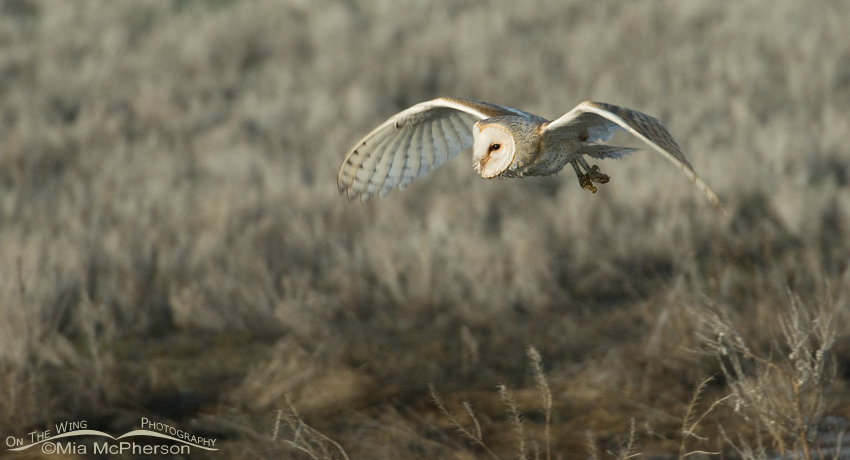 Barn Owl flight pano – Nikon D200, f6.3, 1/640, ISO 400, Nikkor 200-400mm VR with 1.4x TC at 400mm, natural light, not baited or set up
Barn Owl flight pano – Nikon D200, f6.3, 1/640, ISO 400, Nikkor 200-400mm VR with 1.4x TC at 400mm, natural light, not baited or set up
I had a delightful experience this past week in northern Utah with a Barn Owl that was flying along side the road that we were traveling on. Fortunately for me the sun had begun to rise over the Wasatch Mountains giving me enough light to get some shutter speed although I know I would have liked a little more of that to freeze the wings of this fast flying owl in my photos.
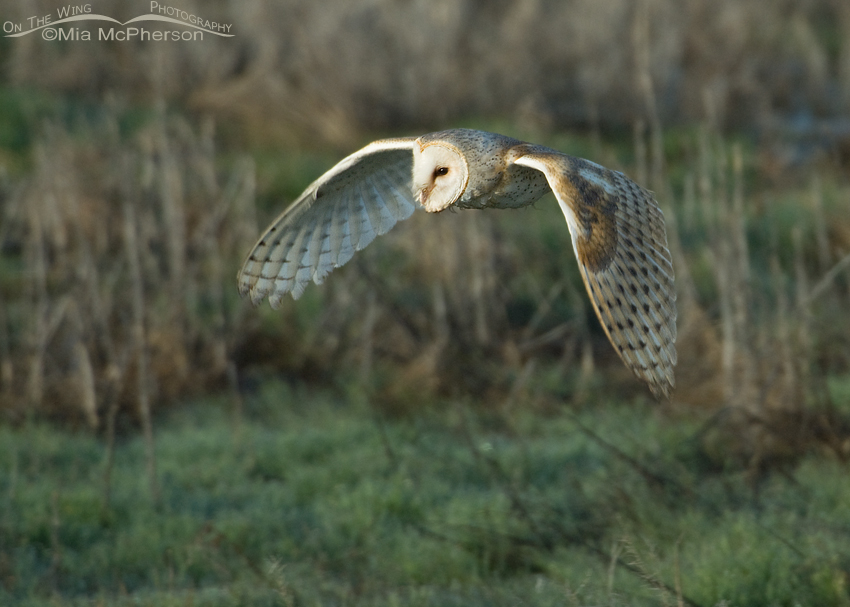 A silent hunter, the Barn Owl – Nikon D200, f6.3, 1/640, ISO 400, Nikkor 200-400mm VR with 1.4x TC at 400mm, natural light, not baited or set up
A silent hunter, the Barn Owl – Nikon D200, f6.3, 1/640, ISO 400, Nikkor 200-400mm VR with 1.4x TC at 400mm, natural light, not baited or set up
Barn Owls actually do like to nest in old barns along with sheds, empty building and open hay barns that are located close to open fields in rural areas. The can be found in many areas of North America and other areas around the world. They are a delight to see with their heart-shaped facial discs and their white and pale, buffy feathers.
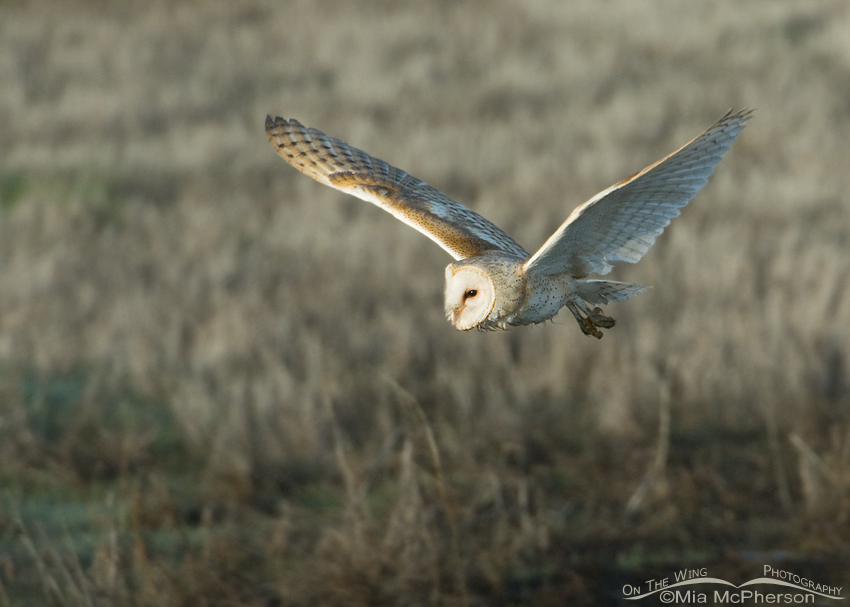 Barn Owl adult – Nikon D200, f6.3, 1/640, ISO 400, Nikkor 200-400mm VR with 1.4x TC at 400mm, natural light, not baited or set up
Barn Owl adult – Nikon D200, f6.3, 1/640, ISO 400, Nikkor 200-400mm VR with 1.4x TC at 400mm, natural light, not baited or set up
Barn Owls are typically nocturnal but here in northern Utah Barn Owls have been known to fly during daylight hours. When the Barn Owls have young they seem to hunt more often so they can their broods. When there are very harsh winters in Utah Barn Owls are seen flying hunting during daylight hours, most likely because of the scarcity of prey and because they instinctively know they need to keep their calorie count up to help with the bitter cold.
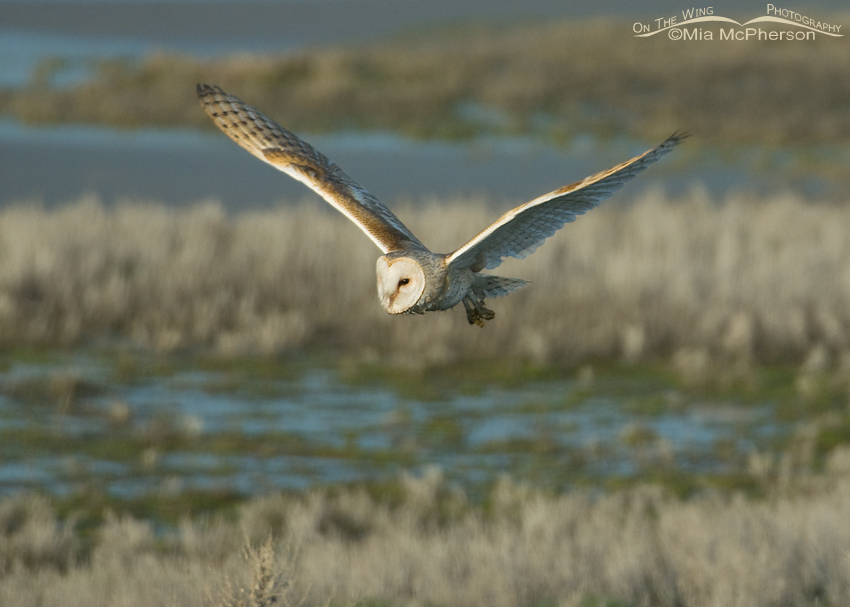 Utah Barn in flight over a marshy area – Nikon D200, f6.3, 1/640, ISO 400, Nikkor 200-400mm VR with 1.4x TC at 400mm, natural light, not baited or set up
Utah Barn in flight over a marshy area – Nikon D200, f6.3, 1/640, ISO 400, Nikkor 200-400mm VR with 1.4x TC at 400mm, natural light, not baited or set up
Barn Owls have been placed on the endangered list in parts of the Midwestern United States, it is thought that new farm practices that some species of the owl’s prey have been declining. Barn Owls are excellent hunters especially at night, they often hear their prey before they see it even on moonless nights. These owls are usually not found in the mountains or heavily forested areas, they prefer open fields, grasslands, deserts and along the edge of marshes.
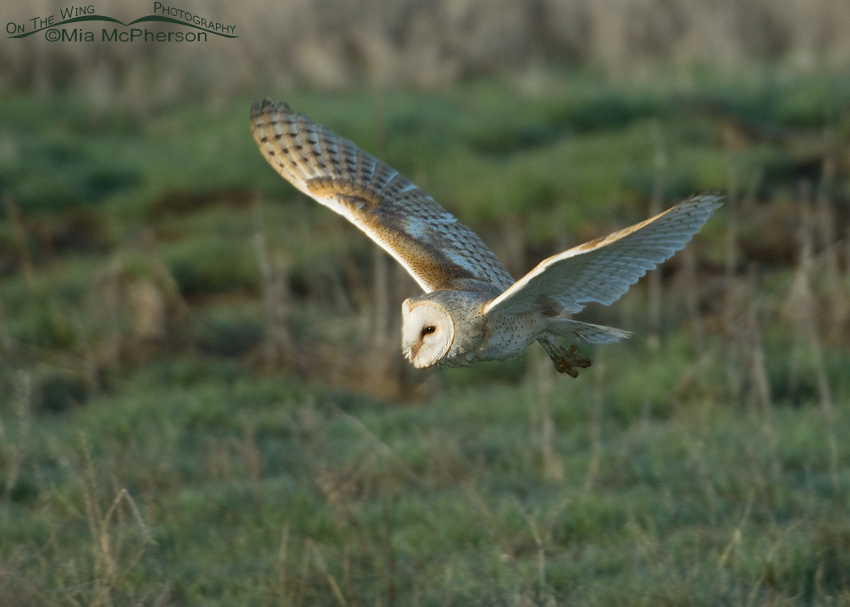 Adult Barn Owl in early morning light – Nikon D200, f6.3, 1/640, ISO 400, Nikkor 200-400mm VR with 1.4x TC at 400mm, natural light, not baited or set up
Adult Barn Owl in early morning light – Nikon D200, f6.3, 1/640, ISO 400, Nikkor 200-400mm VR with 1.4x TC at 400mm, natural light, not baited or set up
I was delighted to be able to photograph this Barn Owl in good light and in flight.
I have been hoping to have more opportunities photographing this beautiful species. They are not as easy to locate as Burrowing or Short-eared Owls but they are well worth the effort to find and photograph. I was thrilled to have had the chance to try to capture their beauty twice this week already and hope that I see this bird again soon.
My fingers are crossed!
Mia
Click here to view more of my Barn Owl photos plus facts and information about this species.


Wow, these are great Mia! So cool to see one of these owls. I’m curious as to how you did this-were you still driving? How did you stay ahead of the owl?
Julie, When we spotted the owl it wasflying the same direction that we were, so we hurriedly drove past it, turned real quick to get some shots out the window facing the bird, then we did that same thing again. You would be surprised how fast these owls can fly!
Love them all!! What a great time you guys most have had!!! I need to drive out to the country!! Really spectacular Mia, great panning job!!
Thanks Garen, Barn Owls are gorgeous birds.